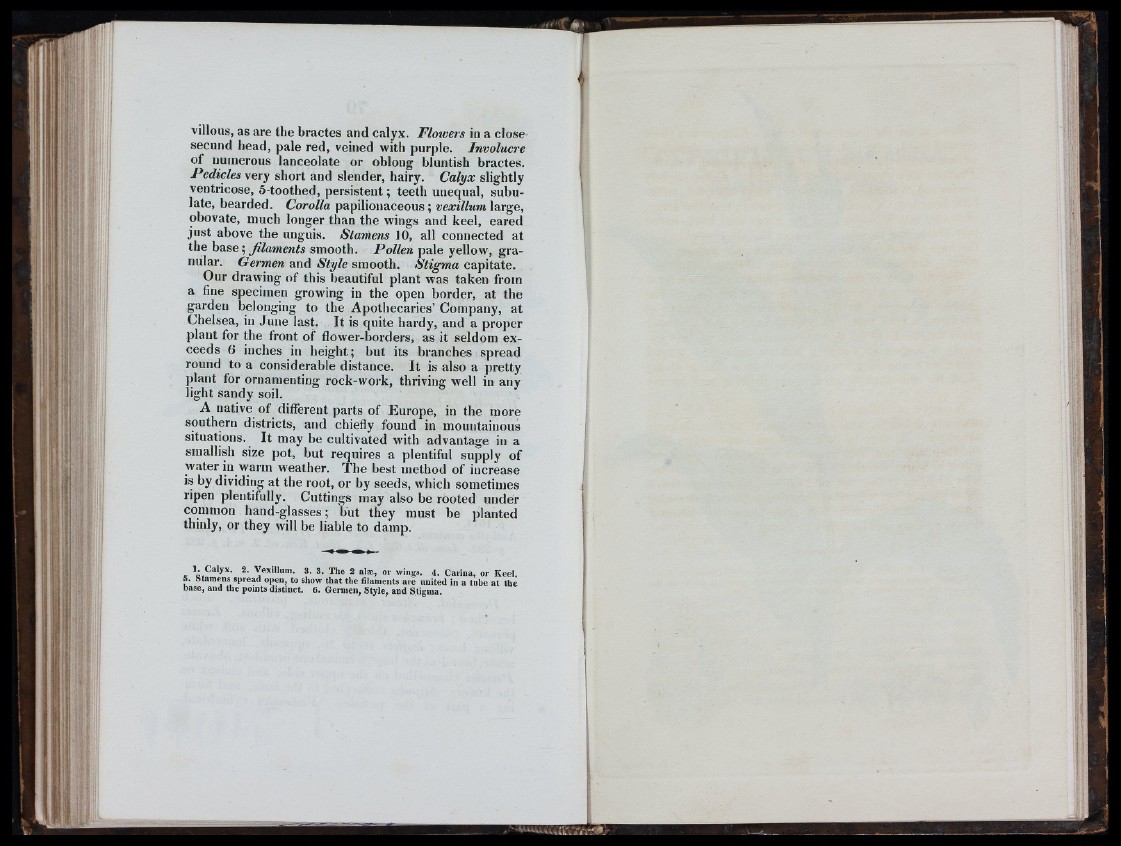
| ! i
i.;i
villous, as are the bractes and calyx. Flowers in a close
secund head, pale red, veined with purple. Involucre
of numerous lanceolate or oblong bluntish bractes.
Pedicles very short and slender, hairy. Calyx slightly
ventricose, 5-toothed, persistent; teeth unequal, subulate,
bearded. Corolla papilionaceous; vexillum large,
obovate, much longer than the wings and keel, eared
just above the unguis. Stamens 10, all connected at
the h a s e filaments smooth. Pollen pale yellow, granular.
Germen and Style smooth. Stigma capitate.
Our drawing of this beautiful plant was taken from
a fine specimen growing in the open border, at the
garden belonging to the Apothecaries’ Company, at
CheLsea, in June last. It is quite hardy, and a proper
plant for the front of flower-borders, as it seldom exceeds
6 inches in height; but its branches spread
round to a considerable distance. It is also a pretty
jdant for ornamenting rock-work, thriving well in any
light sandy soil.
A native of different parts of Europe, in the more
southern districts, and chiefly found in mountainous
situations. ^ It may be cultivated with advantage in a
smallish size pot, but requires a plentiful supply of
water in warm weather. The best method of increase
is by dividing at the root, or by seeds, which sometimes
ripen plentifully. Cuttings may also be rooted under
common hand-glasses; but they must be planted
thinly, or they will be liable to damp.
1. Calyx. 2. Vexillum. 3. 3. The 2 aim, or wings. 4. Carina, or Keel.
5. Stamens spread open, to show that tlie filaments are united in a tube a t the
base, and the points distinct. 6. Germen, Style, and Stigma.